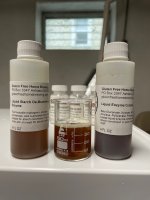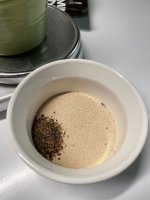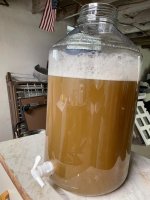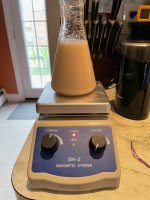- Joined
- Jan 21, 2019
- Messages
- 218
- Reaction score
- 130
Over the weekend I brewed what I'm calling a Sapporo Inspired Ale. The grain bill is below. After a lot reading, there seems to be consensus that 34/70 can ferment at ale temperatures so I am going to try that out and see how it goes. I also F'd and didn't realize I had zero yeast nutrient. I found online that bread yeast can be used as a substitute so i added 2.5 tablespoons of that.
10 lbs Pale Rice Malt
3 lbs Vienna Millet
2 lbs Pale Millet
1.75 oz Sorachi Ace hops
2 sachets 34/70 yeast
10 lbs Pale Rice Malt
3 lbs Vienna Millet
2 lbs Pale Millet
1.75 oz Sorachi Ace hops
2 sachets 34/70 yeast


























































![Craft A Brew - Safale BE-256 Yeast - Fermentis - Belgian Ale Dry Yeast - For Belgian & Strong Ales - Ingredients for Home Brewing - Beer Making Supplies - [3 Pack]](https://m.media-amazon.com/images/I/51bcKEwQmWL._SL500_.jpg)










